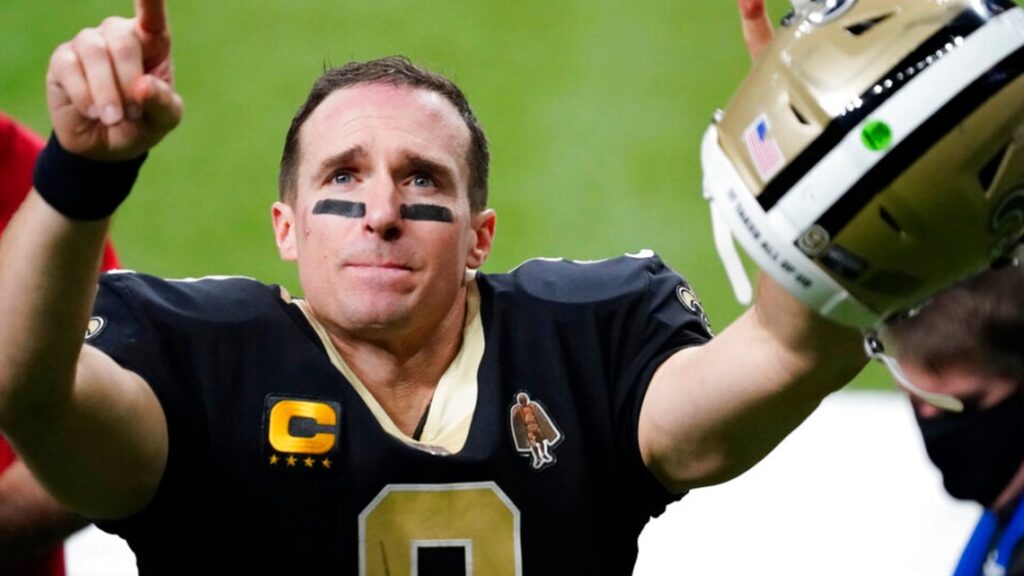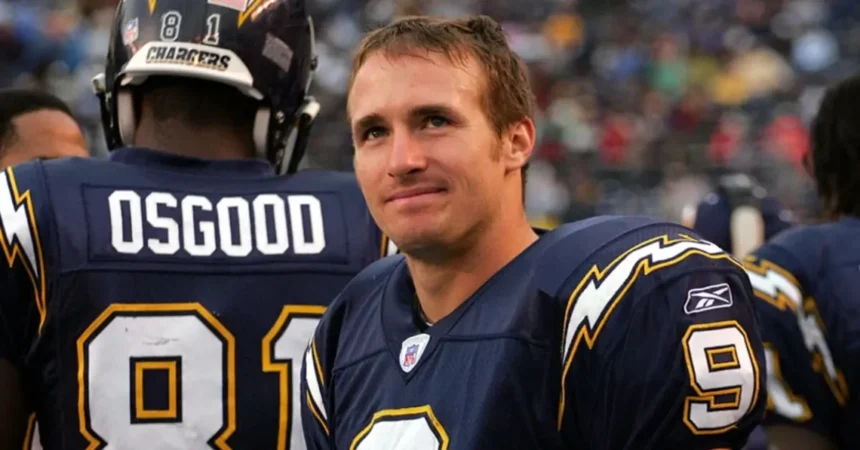Drew Brees’ NBC debut was as memorable for his insightful commentary as it was for his surprising new hairstyle, which instantly became a hot topic on the internet. His transformation sparked widespread discussion, highlighting how significantly a public figure’s appearance can influence public perception.
The key to understanding this shift lies in exploring the strategic role of personal branding in media, particularly for sports personalities transitioning to broadcasting. Brees’ new look is not just about aesthetics; it serves as a deliberate part of redefining his public identity in a new role.
Keep reading to uncover more about drew brees makes his nbc debut, internet amazed by his new hair.
Drew Brees: From the Field to the Screen
Before his striking debut on NBC, Drew Brees was celebrated for his extraordinary NFL career, marked by record-breaking performances and leadership. Transitioning from the football field to the broadcasting studio, Brees brought with him a legacy of precision and expertise that fans admired. This move was anticipated, but the way he chose to present himself, debuting with a new hair look, added an extra layer of intrigue to his already compelling narrative.
The Public’s Reaction: A Buzz Beyond Sports
When Drew Brees appeared on NBC with his new look, the internet erupted with opinions. Social media platforms buzzed with comments ranging from surprise to admiration, highlighting how a well-known figure’s change in appearance can ripple through public consciousness.
This reaction underscores the power of image in the digital age, where a public figure’s appearance can quickly become headline news, influencing public discussions and media coverage extensively.
The Role of Media Training in Athlete Transitions
Transitioning from the high-octane world of professional sports to the meticulous analysis required in broadcasting isn’t just about changing careers; it’s about refining communication skills and media presence.
Drew Brees’ seamless shift highlights the importance of media training for athletes looking to reinvent themselves in new industries. This section will explore the types of media training athletes undergo, the skills they focus on, and how these skills can dramatically improve their effectiveness and appeal in the broadcasting realm.
The Evolution of Sports Celebrities in Digital Media
In an era where digital platforms dominate, athletes like Drew Brees are not just seen on the playing field but are also active participants in creating their digital personas.
His strategic use of a new look during a highly visible debut showcases how athletes can leverage digital media to enhance their personal and professional branding. This section will delve into the evolution of sports celebrities in digital media, examining how they maintain relevance and connect with diverse audiences across various platforms.

Analyzing the Impact of Personal Branding in Broadcasting
The concept of personal branding is crucial in the transition from sports to sports broadcasting. Drew Brees’ makeover is a prime example of how visual changes can reinforce or redefine a public figure’s brand.
This section would delve into the strategies behind such transformations and their implications for career transitions in highly visual domains like broadcasting. The discussion will extend to how these strategies can enhance viewer engagement and establish a new audience base.
Viewer Engagement and Ratings: The Metrics of Success
Analyzing the impact of Drew Brees’ debut on NBC viewer ratings provides concrete evidence of his influence.
This section will examine the viewership statistics before and after his debut, providing insights into how significantly his new image could have influenced audience numbers. Such data is vital for understanding the practical effects of personal branding on broadcasting success.
Future Trends in Sports Broadcasting
As sports broadcasting continues to evolve, figures like Drew Brees are at the forefront, setting trends and shaping viewer expectations.
This section will speculate on future trends in the industry, such as the integration of virtual reality, enhanced interactive viewing experiences, and the growing importance of broadcaster influence. It will also consider how personal branding and visual changes might continue to play pivotal roles in the success and innovation of sports broadcasting.
Conclusion About drew brees makes his nbc debut, internet amazed by his new hair
Drew Brees’ debut on NBC, marked by his unexpected new hairstyle, has set a precedent for how athletes can transition to media roles while also reshaping their public persona.
His approach shows that adapting to a new industry often requires more than just skills transfer; it also involves strategic image management. This case study illustrates the profound impact of personal branding in the modern media landscape.
FAQ’s About drew brees makes his nbc debut, internet amazed by his new hair
What impact did Drew Brees’ new hairstyle have on his debut ratings?
Drew Brees’ new hairstyle correlated with a noticeable buzz and increased viewership, highlighting the impact of visual changes on audience engagement.
How does personal branding affect a sports personality’s transition to broadcasting?
Personal branding plays a pivotal role in how athletes are perceived in new roles, influencing viewer loyalty and engagement.
Can a visual change affect a broadcaster’s credibility?
While visual changes primarily influence audience interest, they can also impact perceived credibility, depending on the audience’s expectations and the nature of the change.
How does social media affect perceptions of broadcasters like Drew Brees?
Social media allows immediate public feedback on broadcasters, shaping perceptions significantly. Fans and critics quickly share views on Brees’ appearance and style, influencing his public image.
What strategies can athletes use for a successful media transition?
Athletes can build a strong personal brand, engage in media training, and strategically plan their debut to emulate Drew Brees’ successful transition to broadcasting.









